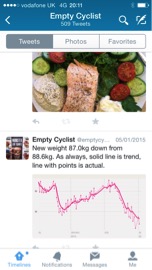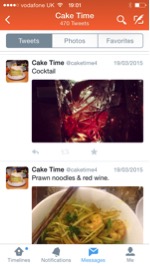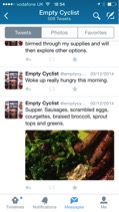I've done a few crazy things with my diet over the years. Made some big mistakes. Done some serious detoxes. And I feel confident that if a client comes to me who needs to look at their eating habits as part of their fitness program then I'm well equipped to help them make the necessary changes. My training through the CHEK institute covers the essentials, and my Nutritionalist colleague Caroline at The Red Apple Clinic supports me in coaching clients who need digestive or hormonal diagnostic testing.

I integrate dietary coaching into my work as and when needed, mostly if weight or poor diet is affecting health, performance, or rehabilitation.
- For example for a moderately fit cyclist who is several stone overweight but wants to climb mountains for fun there is little point in focusing on increasing power.
- For someone who is always tired through lack of sleep and hormonal disruption, establishing circadian rhythms, blood sugar control, and hormonal balance should be the priority.
- For someone with lower back pain whose ‘core’ is reflexively inhibited by inflammation in the digestive tract a rehabilitative exercise program will be ineffective unless they eliminate the irritants that are causing inflammation.
In all this examples, addressing diet is essential in making an exercise program worthwhile in terms of time, effort and money spent.
Diet diaries are a common tool for assessing what someone is eating and beginning to see trends and patterns in order to make positive change. Some traditional ‘food diaries’ list or even weight food in order to look at the balance of calories, or the amount of each of the food ‘groups’ a person is eating.
I am not really interested in calories very much at all. I am interested in how much ‘natural’ food vs. processed food my clients are eating and in the balance of animal:plant based foods that seems to work for them. I am interested in when they eat, how they feel and what hunger or other signals they are receiving as a result.
Interestingly when I ask someone to keep a food diary they often immediately change their diet, presuming that we have a common understanding of ‘good’ and ‘bad’ foods and that I am judging them accordingly. In my mind I am not judging at all, but assessing; assessing what they are eating and how it might relate to barriers to their progress in relation to their goals.
At the end of the summer I began this process with client James Higgs (aka Empty cyclist) who was looking for a long-term solution to a weight problem that was preventing him making the progress he deserved for some intelligent training on the bike. James needed diagnostic testing to look at digestive and hormonal barriers to weight loss. But he also needed an easy way to convey to me what he was eating on a daily basis.
This is where he came up with the idea of the twitter feed food diary, the subject of this blog, and a tool that I now use with all my clients who want to look at their diet.
The first best thing about the twitter diary is that it is so visual. It sounds obvious but whenever I’ve had to read through written diaries in the past I struggle to get a sense of portion size and proportions of protein, fat and carbohydrate within a meal. By taking a photo you can quickly and easily see these at a glance.
Also you can get a sense of the time scale between meals and snacks very easily, and so notice any patterns that emerge from eating certain foods and what the subsequent cascade of choices and eating behaviours looks like.
The immediacy of the diary allows me to give quick and easy feedback in a busy day when I am travelling from one work location to another, or between appointments. By quickly scanning my clients twitter feed I am able to keep up to speed with their eating habits and DM a quick message of encouragement or coaching to help them understand their choices and stay on track.
Significantly, it becomes pretty easy for the person keeping the diary to start to notice these patterns themselves too, making my job a lot easier and giving my clients a strong sense of self-efficacy. The accountability of taking a photo of EVERYTHING YOU EAT AND DRINK aside from water makes you incredibly aware of what you are eating on a very regular basis, and that is a very powerful habit forming tool. Keeping this visual diary makes clients more conscious of their eating habits and the whole process becomes a daily exercise in food (and mood) mindfulness.
Naturally, given that this has worked so well for my clients I thought I would have a go myself to raise my own awareness of my current diet and look to makes some improvements.
Here are the key things I noticed for myself:
- A lot of the food I eat goes straight to my mouth without landing on a plate.
- If I don’t stop to eat a proper meal at roughly the right time of day, I am very likely to eat frequently because I have never really had enough of the right foods to last for several hours.
- When you have to stop and take a photo of everything you are eating, you tend to want to make it look nice and fresh, and when it looks nice and fresh it usually is a lot more nutritious.
Because for me every work day is different, I can find myself with a changeable eating routine, grabbing food between clients and my own training, and not planning ahead for what I might eat for any given meal. These are aspects of my diet and lifestyle that I want to work on, and which the twitter feed will help me with. Like most aspects of fitness, planning and reassessment are the key to making steady progress, and so I will not only be continuing to use this simple idea with my clients in the future, but I intend to harness it to get healthier myself too.






